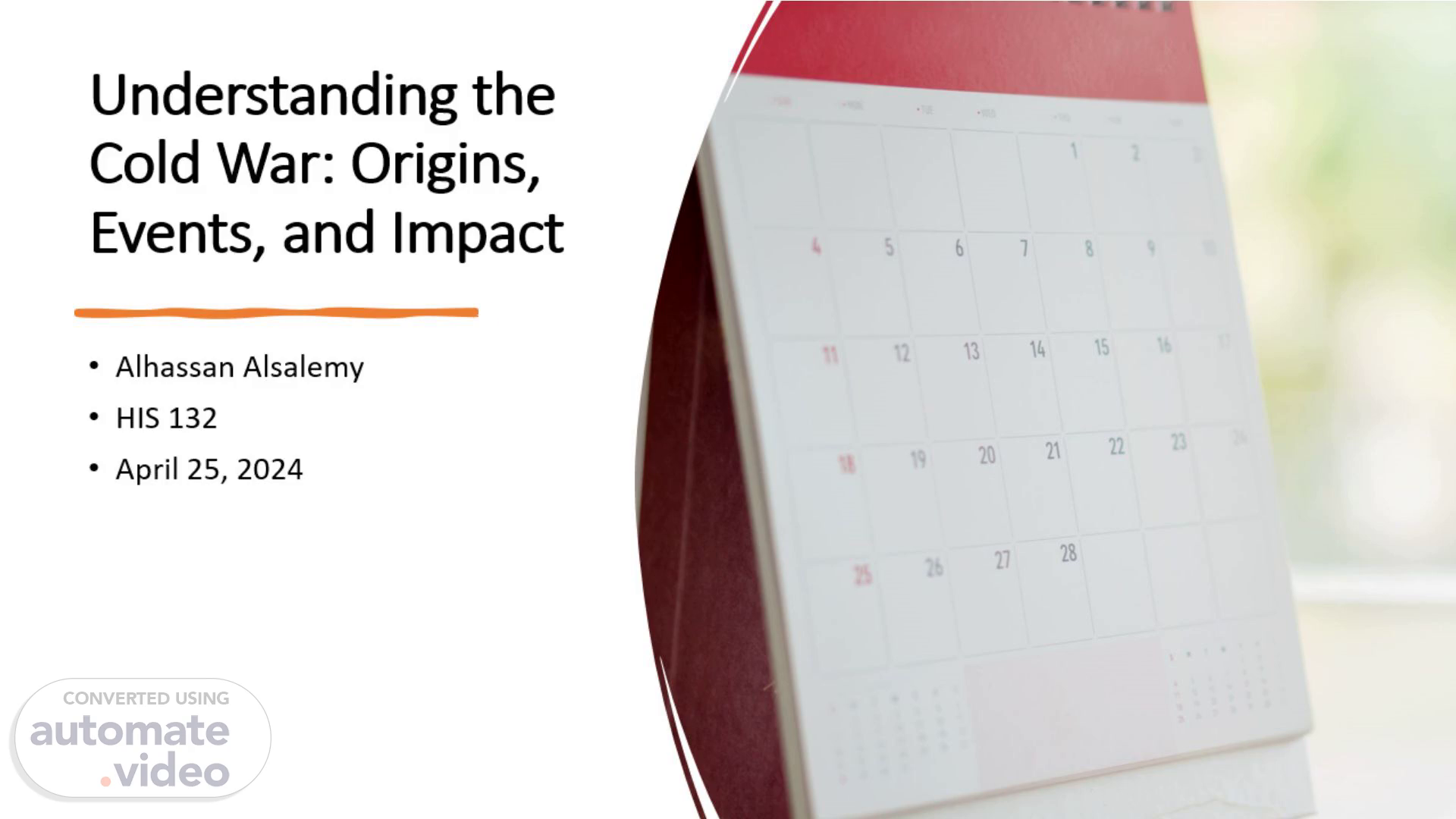
Understanding the Cold War: Origins, Events, and Impact
Scene 1 (0s)
Understanding the Cold War: Origins, Events, and Impact.
Scene 2 (10s)
Origin and Synopsis of the Conflict. The Cold War emerged post-World War II as a period of ideological and geopolitical rivalry between the United States and the Soviet Union. Key questions include: What were the origins of the Cold War? Who were the major combatants involved? Where were the primary geographical locations of conflict?.
Scene 3 (30s)
A couple of men in suits Description automatically generated.
Scene 4 (46s)
Economic Perspective. Economic Interests of India India sought economic development and stability during the Cold War. The conflict indirectly affected India's economy through global political alignments..
Scene 5 (1m 2s)
Social Perspective. Social Interests of Brazil Brazil was not directly involved in the Cold War. The conflict's moral implications were not a significant societal issue in Brazil.
Scene 6 (1m 16s)
Resolution. The Cold War concluded with the collapse of the Soviet Union in 1991, leading to the dissolution of communist regimes in Eastern Europe and the reunification of Germany. This marked a significant shift in global geopolitics..
Scene 7 (1m 36s)
Modern Connection. Today, the Cold War is viewed and taught differently across various countries. Understanding these perspectives provides insights into contemporary geopolitical dynamics and historical memory..
Scene 8 (1m 49s)
Sources. Gaddis, John Lewis. The Cold War: A New History. Penguin Books, 2006. "Origins of the Cold War." Journal of American History, vol. 95, no. 2, 2008, pp. 524-538. Encyclopædia Britannica, "Cold War." Encyclopædia Britannica, Inc. Hall, Richard C. The Cold War: A Historical Almanac. Facts On File, 2003. Library of Congress Cold War Collection. Library of Congress, www.loc.gov/collections/cold-war..